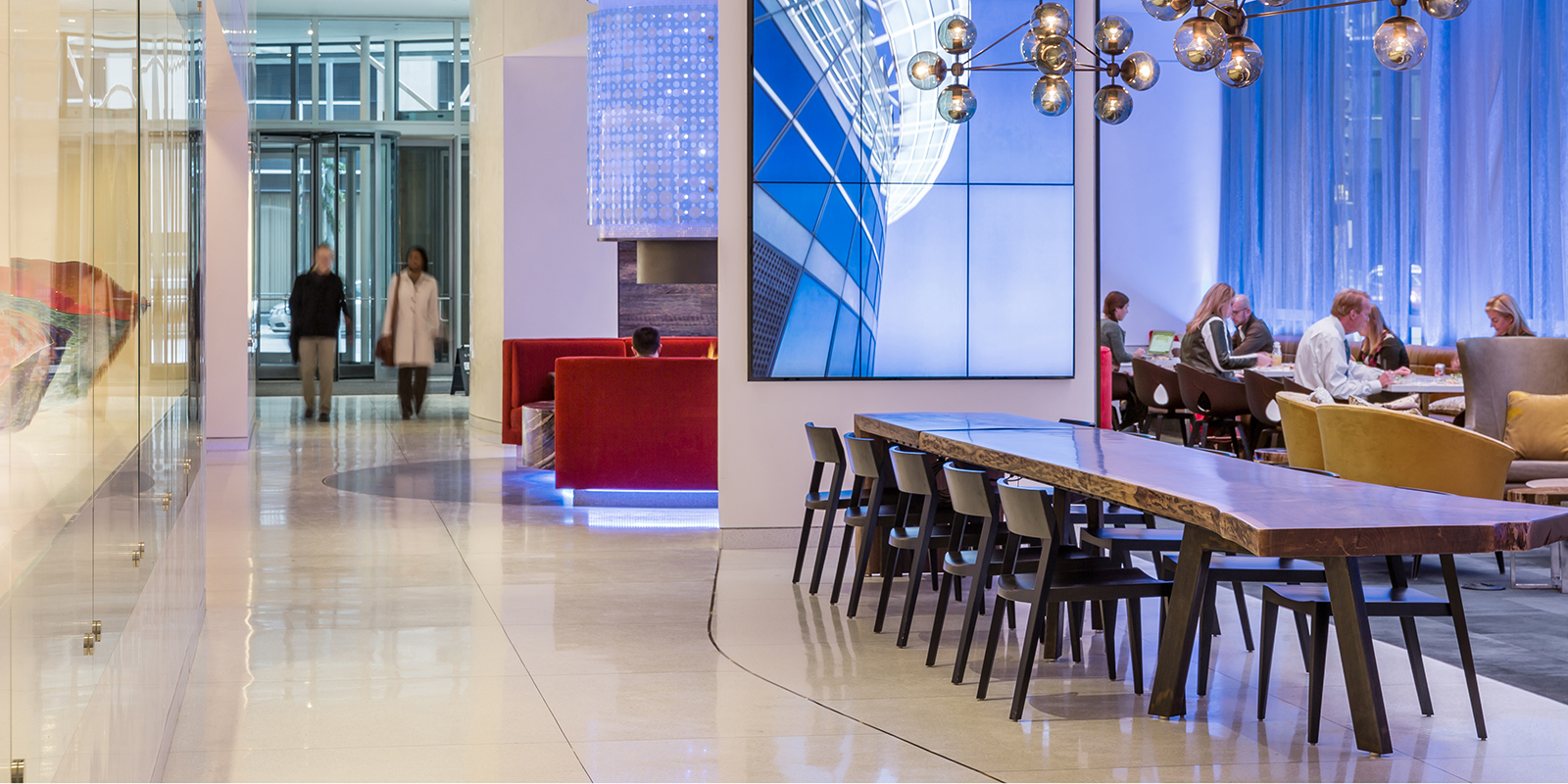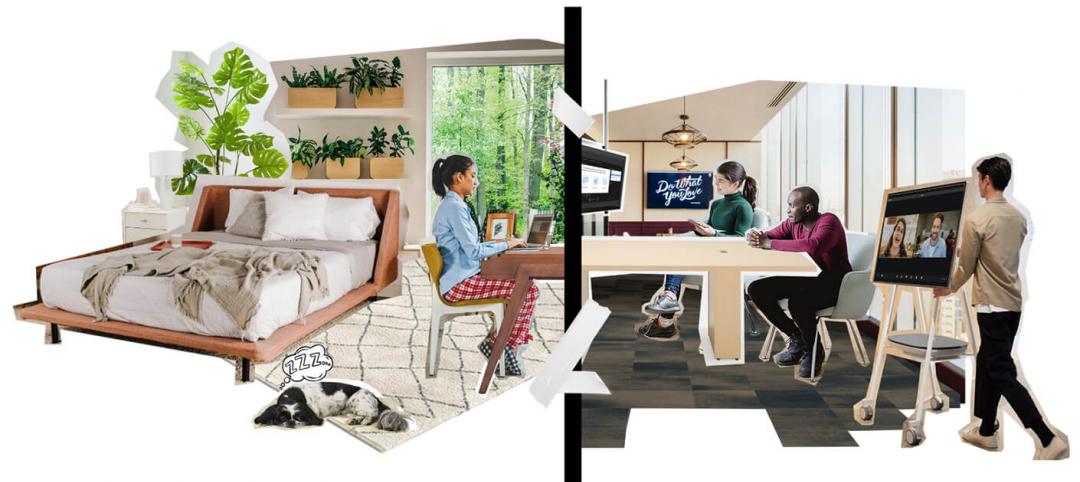As a follow up to my Top Ten Lessons on Mobile Workplace, this is the first in a series of deeper explorations of each of the lessons.
What do you mean by “mobile?” This is a foundational question—and one tied to culture as much as operations and real estate. For example, while some organizations thrive in environments where the results of the work are the measures of performance, others continue to use visual management techniques that rely on seeing employees’ work. It’s not to say that one is correct and another isn’t. But you can imagine that they would have very different perspectives on mobility. Certainly we can agree that an organization must define what degree of mobility it seeks in order to then develop an appropriate program. It’s not a linear approach, but an iterative one and it sounds straightforward. Unfortunately it’s not.
Mobility too often is perceived as “have laptop/am mobile” because the tool connotes flexibility and choice. But we’ve moved beyond that simplistic definition. We now almost assume provisioning of mobile work tools for 21st century work. While not all jobs can be accomplished with mobile tools, many are and those that that perform them are most enabled to take advantage of mobility. However, defining mobile is a hard task. We need to take the time to define what mobile means within the specifics of the organization’s culture, its work processes, its norms and its overall interest in, and ability to, support mobile workers.
Over the last decade, as mobile work has increased and more organizations tackled the development of mobility programs, we’ve seen three main categories emerge: (1) Assigned/Desk Share, (2) Internal or Onsite Mobile, including a variation called Campus Mobile, or (3) Work from Anywhere, including home and other locations. In describing each, the nuances, and the implications for a mobility program are clearer.
Assigned/Desk Share
Also known as dedicated seating, this mobile worker has an allocated workspace. While the cubicle or workstation may be shared by a second-shift worker as in a call center, typically it is assigned to only one individual. This worker may be equipped with a toolkit to be mobile*, but mobility is limited to temporary spurts—an informal meeting in the cafeteria or training session in a conference room. Even if occasionally working mobile, the individual always returns to the same workspace. It’s a mutual, if implied, psychological contract between the worker and the organization. One provides the place to work and the tools while the other does the work in that place with those tools. Management protocols are the basics that we tend to know. Real Estate and Operations are the same.
Internally or Onsite Mobile
Hot Desking, Free Address, Activity-Based Workplace and Hoteling are terms relating to this category of mobile. This worker is free to move around the workplace, using any of the variety of environments provided from an onsite coffee shop to casual seating area to a treadmill with laptop mount. A participant in the sharing economy, this worker is beholden to let others know when those shared workspaces aren’t in use. What one client called “good neighbor policies” assure that sharing of workplace environments goes smoothly.
Campus Mobile is a variation of Onsite that simply increases the number of possible work locations, as with a pharmaceutical company campus where multiple buildings and amenities are located across a broader site area. The area is bigger, but a core principle is the assumption that the worker is somewhere onsite, a very different principle than assuming that the worker is at a dedicated cubicle. As such, it requires a different way of monitoring work and a different means for maintaining team engagement. Management styles, real estate strategies and operational concerns will differ as well.
Work from Anywhere
Anywhere is such a big word. Telecommuting, Client Site Work and Digital Nomads are all under this umbrella. (We’ll talk tools later in the series when we review piloting for success.) While they enable work from anywhere, the degree of tethering to the organization’s ‘home’ site can vary widely. Some Work from Anywhere workers are simply working from their home, while others may be half-way around the world, resulting in significant differences in the ability to physically collocate with teams. These workers are the most independent in some ways and the most dependent in others.
Digital Nomads, by their very nature, are often sought for their expertise and have the ability to negotiate significant flexibility with employers seeking that expertise. Sometimes Telecommuters are exactly the same, simply choosing to live in a city that may differ from that of the organization or to live in the same city but avoid a commute. In either case, the contribution of these individuals, their subject-matter expertise, outweighs the need for them to be in the same physical environment as their coworkers. On the other hand, sometimes these workers are similar to ‘piece workers’, taking a job as a transaction (think writers, coders who develop specific sections and move on, small business consultants, etc.). These workers are very dependent on the continuous demand for their services as they have no organizational metastructure. For the mobile worker who is part of a large organization considering a mobile work program, the former scenario is most likely.
For this group of virtually present workers, management styles are more complex across time zones and include integrating engagement tools to manage virtual presence, creating team cohesion, and fairly managing the worker’s development and career growth. Real Estate and Operations are similarly complex and clearly more challenging than when dealing with dedicated workspaces for individual workers.
Although these three typologies share common characteristics such as basic toolkit provisioning, they vary significantly in terms of management expectations on collocation, team dynamics and techniques to maintain cohesion, organizational engagement, job types suitable for these activities, management styles necessary to support these typologies and on and on. The real estate strategy to support these mobility types varies, as does the operational strategy and cost model. They’re also composed of potentially quite different breeds of workers who may have greater or lesser comfort with independent work and direction. As a result, the human resources support must be tailored appropriately. Again, one or the other isn’t better or worse. They’re simply different, or rather complexly different and deserving of the attention necessary to define those differences in substantive ways in order to establish a basis for the development of any mobility program.
That’s step one. As Nabokov wrote, “the breaking of a wave cannot explain the whole sea.” Next up, I’ll describe the team that’s necessary to tackle this effort. Hint: It’s not solely a real estate team.
About the Author: As Principal and Global Discipline Leader for Planning and Strategies, Janice Barnes focuses on the ways in which planning enables clients to meet their business goals. With twenty-five years of design experience as well as a significant research background, Janice’s work focuses on eliciting information on work practices and organizing this information to help clients make better decisions.
More from Author
Perkins and Will | Sep 19, 2023
Transforming shopping malls into 21st century neighborhoods
As we reimagine the antiquated shopping mall, Marc Asnis, AICP, Associate, Perkins&Will, details four first steps to consider.
Perkins and Will | Jul 20, 2023
The co-worker as the new office amenity
Incentivizing, rather than mandating the return to the office, is the key to bringing back happy employees that want to work from the office. Spaces that are designed and curated for human-centric experiences will attract employees back into the workplace, and in turn, make office buildings thrive once again. Perkins&Will’s Wyatt Frantom offers a macro to micro view of the office market and the impact of employees on the future of work.
Perkins and Will | May 30, 2023
How design supports a more holistic approach to training
For today’s college athletes, training is no longer about cramming team practices and weight lifting sessions in between classes.
Perkins and Will | Dec 20, 2022
4 triage design innovations for shorter wait times
Perkins and Will shares a nurse's insights on triage design, and how to help emergency departments make the most of their resources.
Perkins and Will | Aug 30, 2021
The great re-shuffle & re-think
In this new hybrid environment in which we cater to how our employees work best, how will we manage new hybrid work practices and etiquette?
Perkins and Will | May 18, 2020
Global design firms collaborate on new COVID-19 mobile testing lab to bring testing to vulnerable communities worldwide
Perkins and Will, Schmidt Hammer Lassen Architects, and Arup Group develop scalable solutions for increased testing capacity within high-density and under-served neighborhoods.
Perkins and Will | Jun 7, 2019
Workplace wellness: Top 3 tips for Fitwel certification
How can thoughtful design encourage healthier choices, lifestyles, and work environments?
Perkins and Will | Feb 27, 2019
ResilientSEE: A framework to achieve resilience across scales
Conceived in the Boston studio of Perkins+Will, the ResilientSEE team developed a resilient planning framework that can be applied to other neighborhoods, cities, and countries.
Perkins and Will | Nov 28, 2018
Amazon HQ2 and the new geography of work
The big HQ2 takeaway is how geography and mobility are becoming major workplace drivers.
Perkins and Will | Sep 4, 2018
It takes more than money to fund resilience
Resilient design, much like all projects in the built environment, requires funding.
















